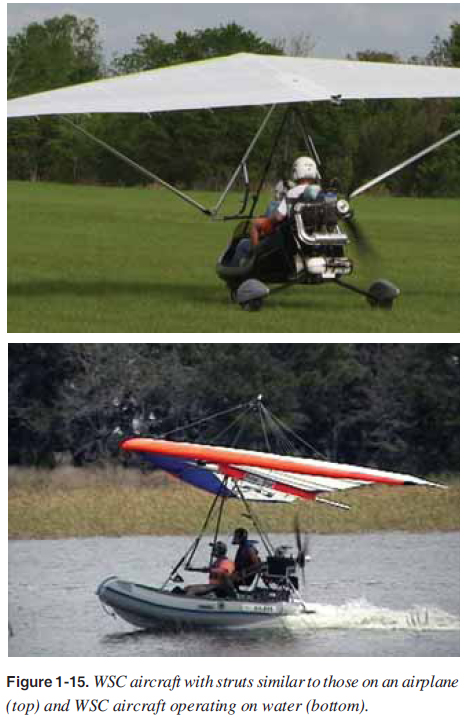
 |
|
||
CHAPTER 1. Introduction To Weight-Shift Control Weight-Shift Control Aircraft WSC aircraft are single- and two-place trikes that do not meet the criteria of an ultralight vehicle but do meet the criteria of LSA. The defi nition for WSC can be found in 14 CFR part 1. Flight control of the aircraft depends on the wingís ability to fl exibly deform rather than on the use of control surfaces. The common acronyms for this LSA are WSC (weight-shift control); WSCL (WSC land), which can be wheels or ski equipped; and WSCS (WSC Sea) for water operations. A LSA WSC used for sport and private pilot fl ying must be registered with a FAA N-number, have an airworthiness certificate, a pilotís operating handbook (POH), and/or limitations with a weight and loading document aboard. The aircraft must be maintained properly by the aircraft owner or other qualifi ed personnel and have the aircraft logbooks available for inspection. Dual fl ight controls are required in two-seat aircraft used for training. The carriage is comprised of the engine and fl ight deck attached by a structure to wheels, fl oats, or skis; it may also be referred to as the fuselage. The wing is the sail, structure that supports the sail, battens (ribs) that form the airfoil, and associated hardware. [Figure 1-13]  There are several unique features of the WSC aircraft:
 ē Since the WSC aircraft is designed without the weight and drag of a tail, the performance is signifi cantly increased. The aircraft can take off and land in short fields, has good climb rates, can handle a large payload, has a good glide ratio, and is fuel effi cient. The WSC LSA typically can carry 600 pounds of people, fuel, and baggage. Besides having large and small wings for different speeds, the WSC aircraft wings can have wires for bracing, struts, or a combination of both. Throughout this handbook, both are used in diagrams and pictures. WSC aircraft are typically on wheels, but there are models that can land and take off on water and snow. [Figure 1-15]  |
| ©AvStop Online Magazine Contact Us Return To Books |